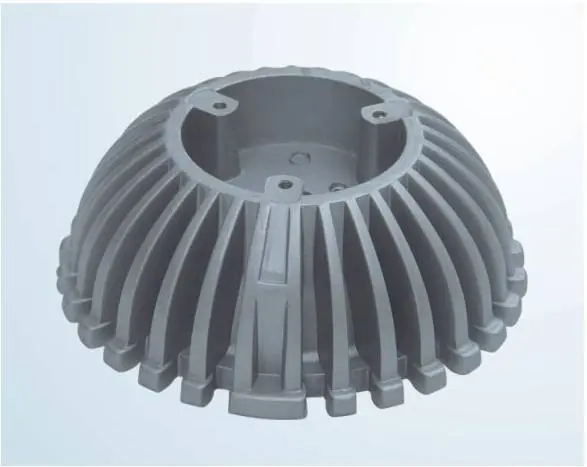What Kinds of Surface Treatments Do Aluminum Alloy Die Casts Have? (Part One)
Surface treatment of aluminum alloy die casts can be classified into pre-treatment and post-treatment. Pre-treatment is used for removing oxide skins and oil so as to improve adhesion force of post-treatment and make the die casting part's appearance better. There are three commonly used pre-treatments for aluminum alloy die casts, that is shot blasting, sand blasting and phosphating. Post-treatment generally can be divided into spraying, oxidation, electroplating and electrophoresis four kinds, and other surface treatments are only applied to the die casting part with special requirements due to the cost.
If we take costs into account, the following steps are for pre-treatment of the die casting part:
Shot blasting → sand blasting → phosphating → polishing and then spraying → electrophoresis → oxidation → electroplating
Please noted that the workpiece can only have spraying or electrophoresis treatment and can't have oxidation or electroplating treatment after the phosphating process.
If we take decoration and anti-corrosion into account, the following steps are for post-treatment of the die casting part:
Polishing → phosphating → sand blasting → shot blasting and then oxidation → electroplating → spraying → electrophoresis
Car engine shells generally adopt shot blasting and then spraying treatment.
Methods of surface pretreatment
1. Manual treatment
Scrapers, steel brushes and grinding wheels can be used for manually removing rust and oxide skins on surfaces of the workpiece. However, manual treatment has high labor intensity, low productivity, poor quality and incomplete cleaning.
2. Chemical treatment
Chemical treatment mainly adopts acid-base or alkaline solutions to react with oxide skins and oil on surfaces of workpieces so that oxide skins and oil can be dissolved in acidic or alkaline solutions and oxide skins and oil can be removed. Chemical treatment is suitable for cleaning the thin workpiece, but there is a disadvantage. If the time is not controlled properly, over etchings will happen on steel even if inhibiter is added. For more complex structural parts and parts with holes, residual acid which is immersed in the gap or the hole is difficult to be removed completely after the part is put into the pickling acid solution. If we don't deal with the problem well, it will become a hidden danger of corrosion of the workpiece later. Chemicals are easy to volatilize and have a high cost. It is very difficult to handle the chemical discharge after the treatment. If the chemical discharge is handled improperly, it will cause serious pollution to the environment. With the improvement of people's environmental protection awareness, chemical treatment is replaced by mechanical treatment.
If we take costs into account, the following steps are for pre-treatment of the die casting part:
Shot blasting → sand blasting → phosphating → polishing and then spraying → electrophoresis → oxidation → electroplating
Please noted that the workpiece can only have spraying or electrophoresis treatment and can't have oxidation or electroplating treatment after the phosphating process.
If we take decoration and anti-corrosion into account, the following steps are for post-treatment of the die casting part:
Polishing → phosphating → sand blasting → shot blasting and then oxidation → electroplating → spraying → electrophoresis
Car engine shells generally adopt shot blasting and then spraying treatment.
Methods of surface pretreatment
1. Manual treatment
Scrapers, steel brushes and grinding wheels can be used for manually removing rust and oxide skins on surfaces of the workpiece. However, manual treatment has high labor intensity, low productivity, poor quality and incomplete cleaning.
2. Chemical treatment
Chemical treatment mainly adopts acid-base or alkaline solutions to react with oxide skins and oil on surfaces of workpieces so that oxide skins and oil can be dissolved in acidic or alkaline solutions and oxide skins and oil can be removed. Chemical treatment is suitable for cleaning the thin workpiece, but there is a disadvantage. If the time is not controlled properly, over etchings will happen on steel even if inhibiter is added. For more complex structural parts and parts with holes, residual acid which is immersed in the gap or the hole is difficult to be removed completely after the part is put into the pickling acid solution. If we don't deal with the problem well, it will become a hidden danger of corrosion of the workpiece later. Chemicals are easy to volatilize and have a high cost. It is very difficult to handle the chemical discharge after the treatment. If the chemical discharge is handled improperly, it will cause serious pollution to the environment. With the improvement of people's environmental protection awareness, chemical treatment is replaced by mechanical treatment.
